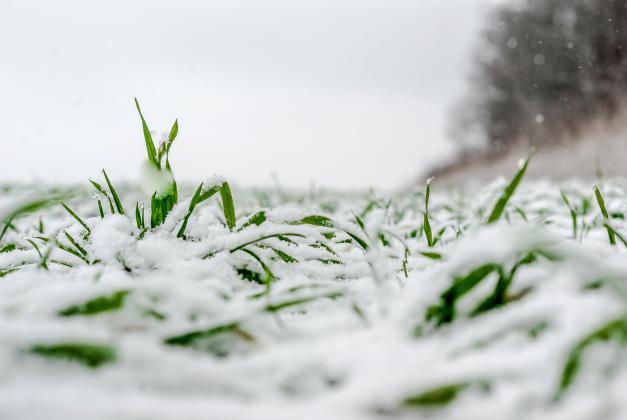Keith VanSkike - Twin Creeks Extension District, Agronomy & Natural Resources
Snow fell for the first time this fall across many parts of Kansas on November 14. While amounts were not particularly heavy, measurable snow was observed in many parts of the state. The latest Drought Monitor reports that almost 70% of Kansas is under severe to exceptional drought. In times like this, every precipitation event, rain or snow, is important. Average snowfall for a “snow year”, defined usually as the period from July 1-June 30, ranges from 6 to 30 inches across the state, with a statewide average of 16 inches. Goodland has the highest amount, 30 inches, helped in part by being one of only four locations that averages a small amount of snow in September. In Kansas about 70% of the total snow that falls in a snow year typically occurs between December and February. The 30- year normal average snowfall for Hill City was 17.4 inches and for Oberlin was 25.2 inches. Believe it or not, Colby, Kansas and Goodland, Kansas have the state highest of 27 inches and 30 inches respectively. They start getting snow in September and October.
How Much Moisture is in Snow?
In Kansas, the most frequently used term is often liquid equivalent. This is the depth of water that would result from melting a sample of snow. Liquid equivalent is the amount of measurable moisture if the snow were to have fallen as rain. This is where the infamous “10-to-1” ratio has its roots. The “10-to-1” ratio is the assumption that for every 10 inches of snow that falls, there is roughly 1 inch of actual moisture. If temperatures are colder, say in the 10-to-15-degree Fahrenheit range, estimates can be as high as 30-to-1 (30 inches of snow equal to 1 inch of moisture/precipitation). Historically, average Kansas snow ranges from 12-14 inches per 1 inch of moisture.

